
For people who experience intense fears or phobias, carrying that weight wherever you go can feel like a specter, lurking over your shoulder, haunting you with its constant, lingering presence. The nature of our fears are unique to each of us, and conveying those deeply personal emotions can be just as challenging as living with them. But the latest expansion from Magic: The Gathering, the horror-themed Duskmourn, sets out to do just that: shine a light on and reveal the fears, stresses, and uncertainties that the game’s characters carry with them as the world within that fiction unravels.
“With these cards you can feel the madness, you can see it with the tilt of a card,” said Wizards of the Coast production artist Nickii Pelletier in an interview with Polygon.
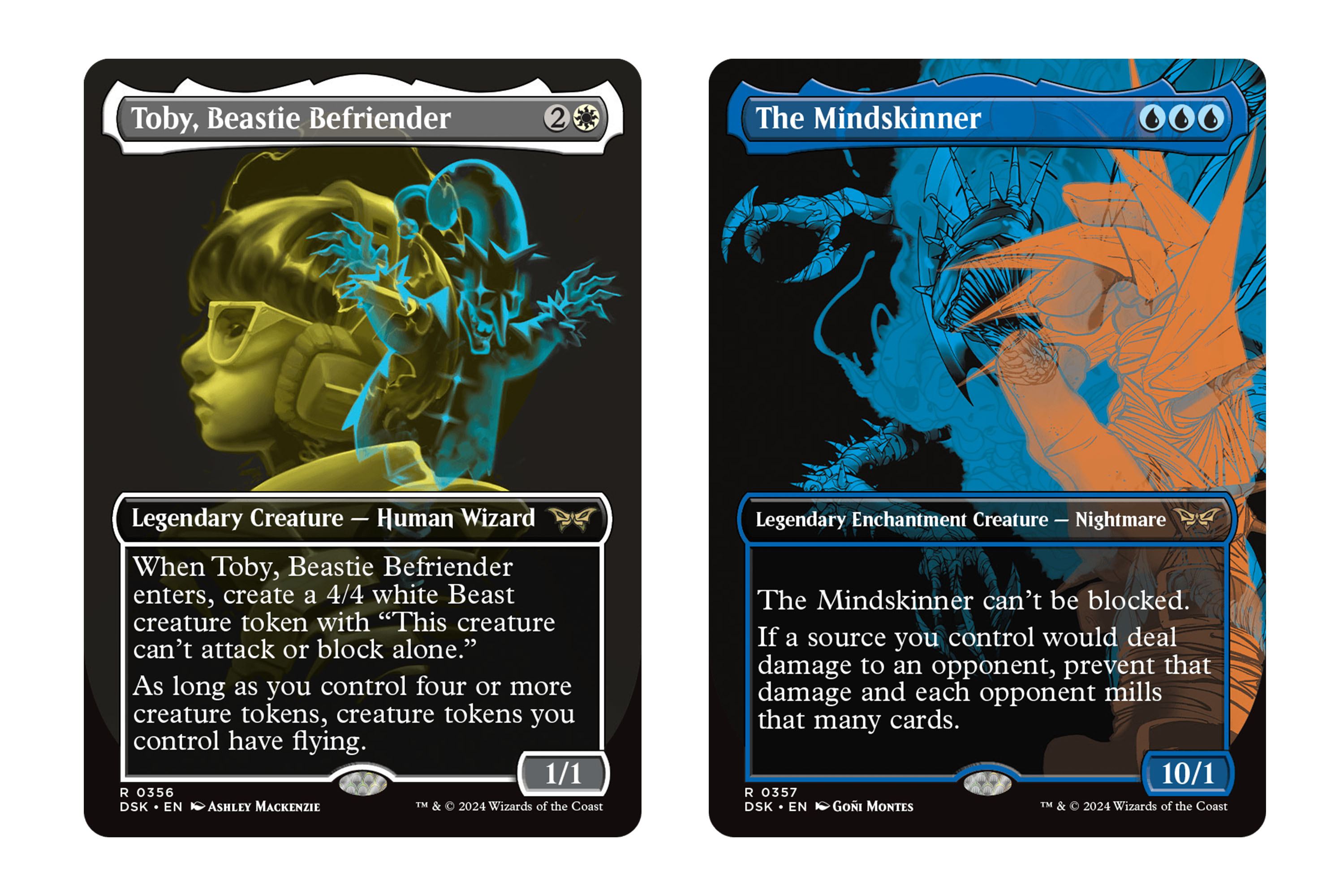
Since the introduction of Booster Fun in 2019, nearly every subsequent Magic set has had a selection of cards that are printed with what’s known as a “showcase” treatment. These are cards that can appear in regular booster packs, but they serve as alternate versions of the cards that players would also find with the usual Magic design.
When they first appeared in 2019’s Throne of Eldraine, the showcase treatments looked like whimsical storybooks that evoked the feeling of reading an old fairytale in an ornate tome. Though each subsequent set’s showcase treatments were different, the goal has always been to capture a set’s themes and worldbuilding through uncharted artistic expressions.
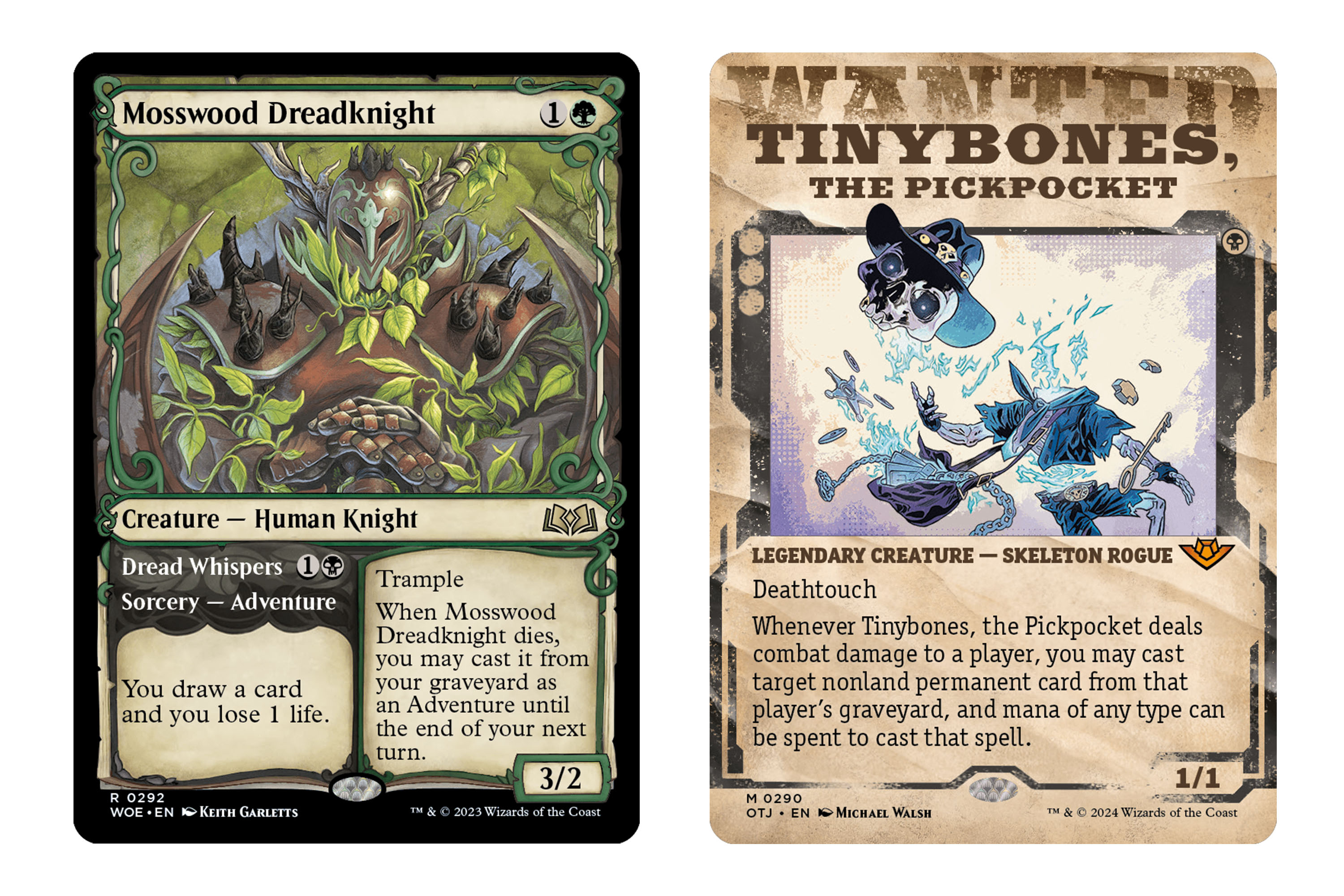
“You can open a pack and come across something that doesn’t look like anything else in the pack, but is still of the set and of that pack, and sits in it, and means something to it,” said Sarah Wassell, art director at Wizards of the Coast. “It’s exciting and it feels different, but it still is completely related to every other aspect that makes the game great.”
Duskmourn features several showcase treatments throughout the set. Some of the showcase cards replace the usual Magic frame with an otherworldly, neon television set. Another group of cards highlight a new creature type — animal spirits called glimmers — and has them jumping through shimmering shapes of gold light and bouncing off the card.

But the final showcase treatment, known as double exposure, is particularly arresting and uniquely personal to the cards’ depicted subjects.
“We were looking for a way to show characters and creatures in the set in a simplified portraiture style, somehow incorporating a strong visual element of fear and/or psychological horror, or showing both a hero and their greatest fear in the same image,” Pelletier explained in documents shared with Polygon. “We were attracted to the double exposure technique in film photography, used for ‘spirit’ photographs, and fine art photography: this gave us an ability to combine two images into a new image, becoming more than the sum of its individual parts.”
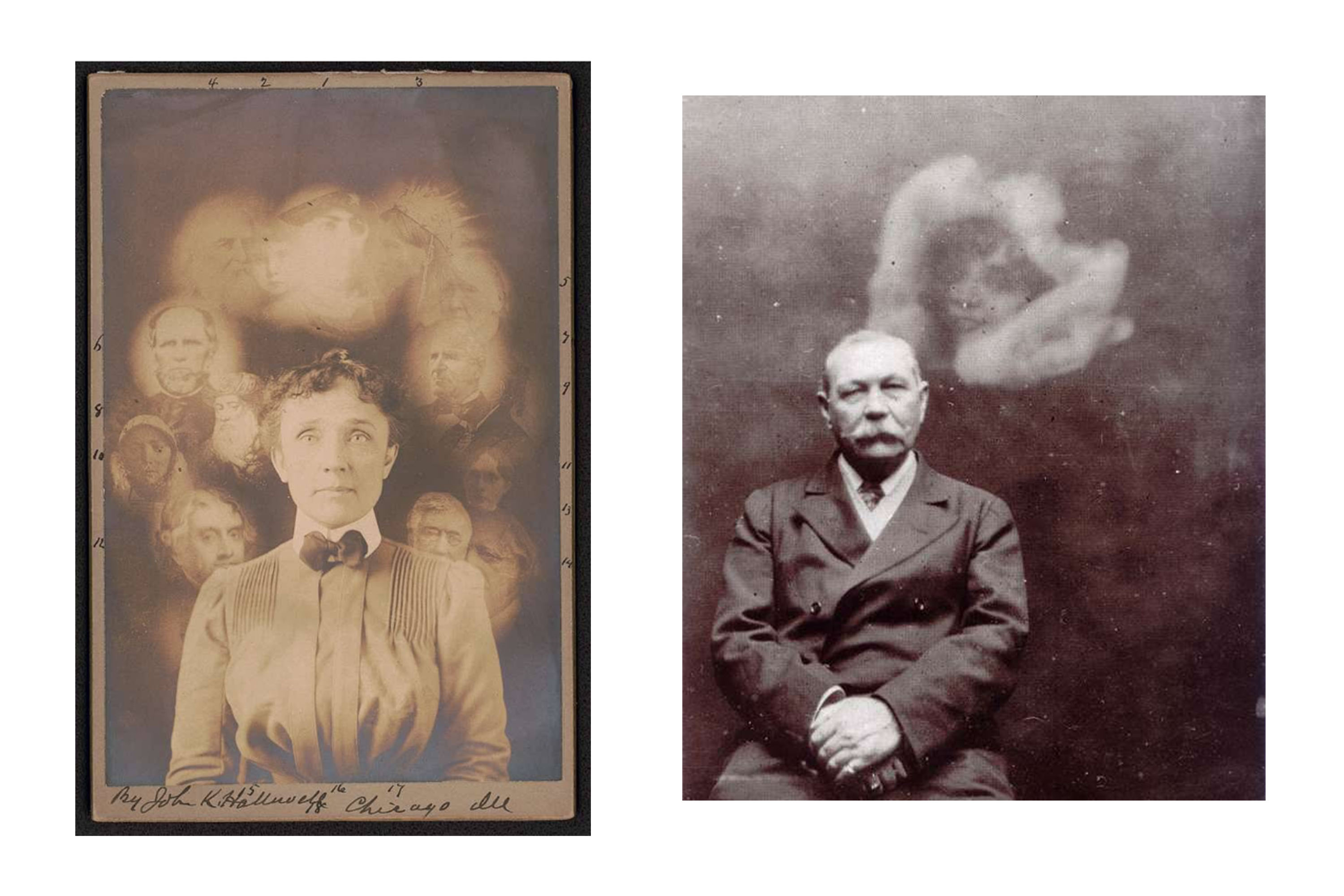
Once double exposure and spirit photographs were chosen as a showcase treatment for the set, a new challenge emerged. Since this art style was meant to appear on Magic cards, how would the artists and designers incorporate a century-old approach of developing analog photographs onto digitally rendered trading cards?
“There’s a lot of testing that goes into this… I wish I could tell you that you can tell by looking at a screen, but a lot of times it is printing out a shiny piece of paper and seeing what it feels like and looks like in person,” Pelletier said. “I can count eight different specialized print treatments that we tried.”

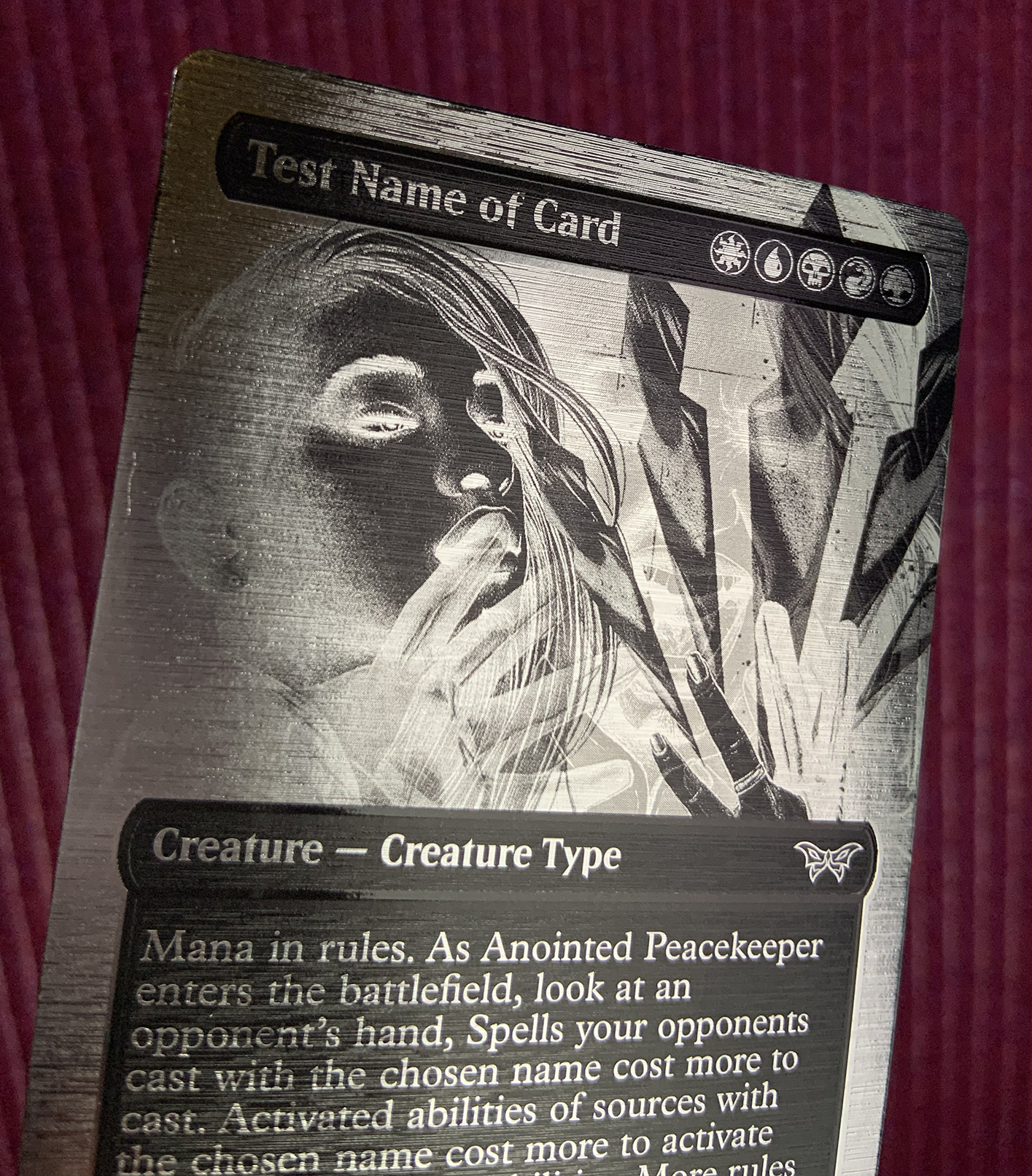

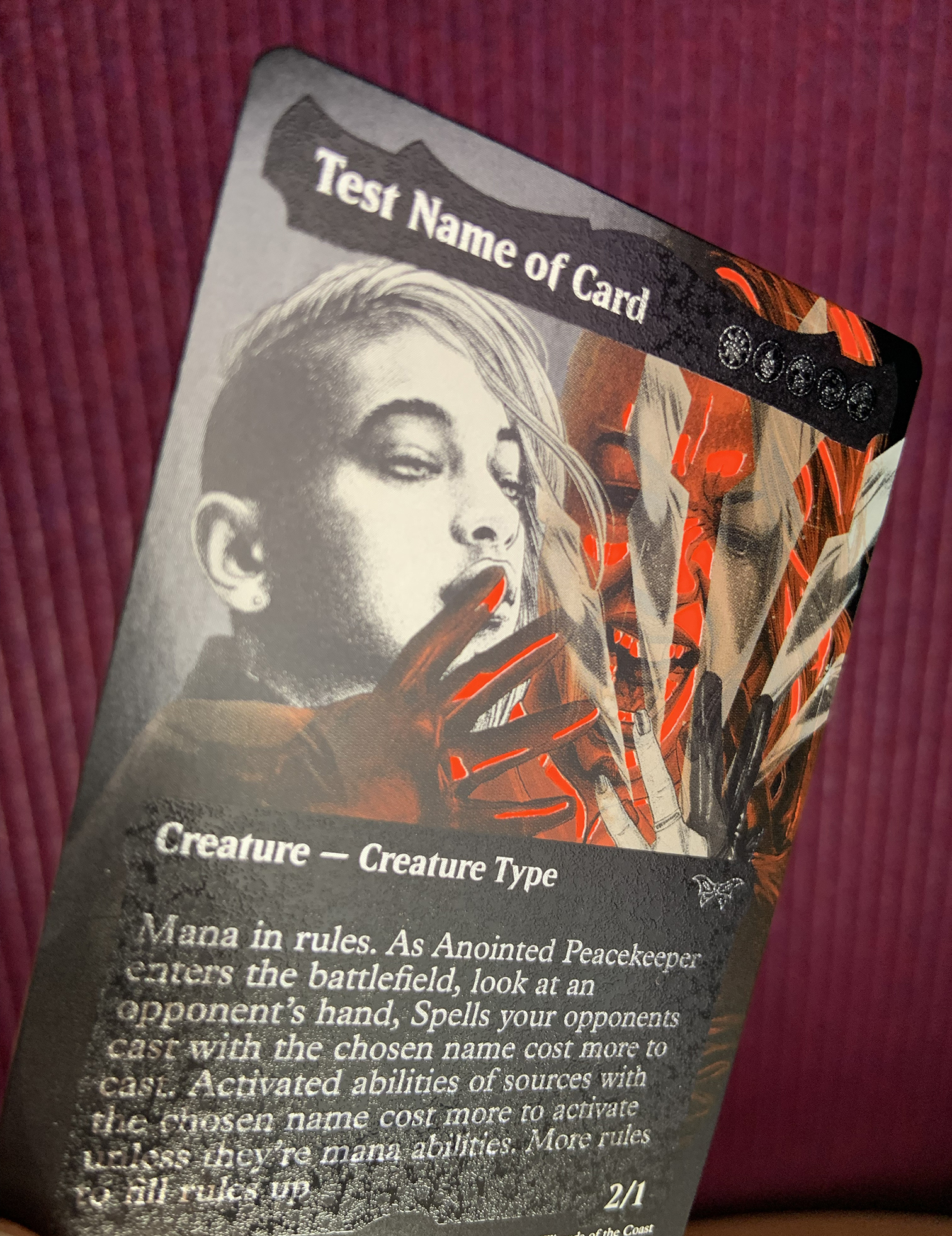
As they continued to experiment, the set’s designers looked to the mechanics of actual photography and explored inverse images to create something that looks like a film negative. They also tested neon ink to capture the ’80s-retro-horror theme of the set with an added pop of color.
Eventually, the printing process both tested and challenged some of the designers’ most ambitious ideas, as well as the thematic throughline that these cards were meant to have with the rest of the set. The end goal for the double exposure cards was ultimately about telling a story through two images stacked on top of each other, so nailing the relationship between those images was critical for conveying the emotion behind the cards to players.
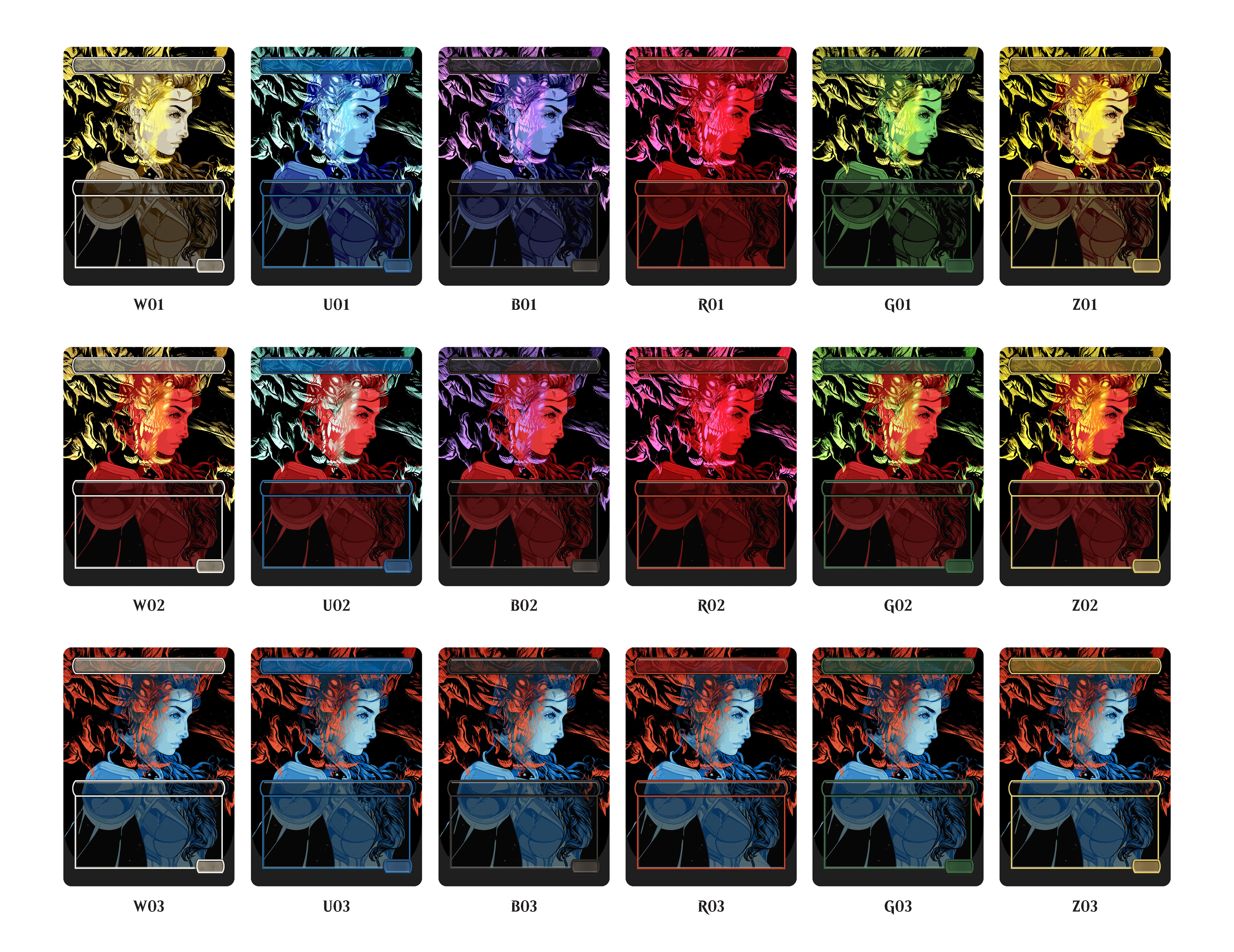
“The way each of the two images overlaps is really key to the success of the final image,” Wassell explained. “There’s a couple [cards] with moths, and where the pattern of the moth wings overlaps with the face of the character can do a lot. So at that point, if you decide to use neon, and emphasize one image way over the other one, that interplay between the two images becomes more challenging and changes.”

For the designers and illustrators, this meant being keenly aware of not only the relationships between contrasting colors, but even gestalt. In art and psychology, gestalt describes the habit of people finding patterns or form in complex images. In the case of double exposure cards, it highlights the challenge of utilizing two distinct visual elements to tell a nuanced and emotional story.

“Your brain understands it’s one plus one, but the answer becomes three because you’ve done something more than put two things together,” Wassell explained. “The way they interact, a third thing starts to happen, and you start to see something different. It doesn’t look like a moth with a woman, it starts to look like a woman with a headdress.”
The final product utilizes the double exposure style across a variety of creature cards within the set, including the story’s heroes, villains, and some of the more menacing monsters lurking in the halls of the haunted house realm that is Duskmourn. If you’re lucky enough to find one of these cards in a booster pack, don’t be scared to use them in a deck. These horrors can’t hurt you… probably.
Duskmourn goes on sale at your local game stores on Sept. 27.
Disclosure: This article is based on a Magic: The Gathering – Duskmourn event held at Wizards of the Coast’s headquarters in Washington state. Wizards provided our freelancer’s travel and accommodations for the event. You can find additional information about Polygon’s ethics policy here.
